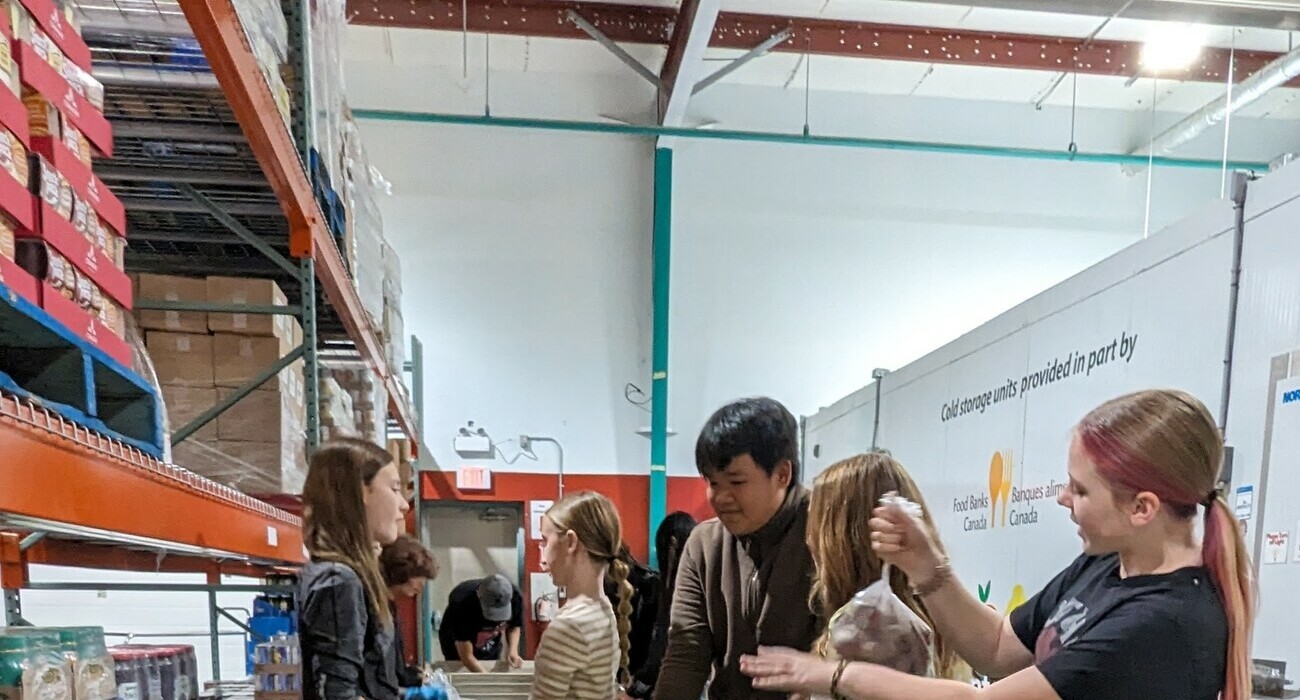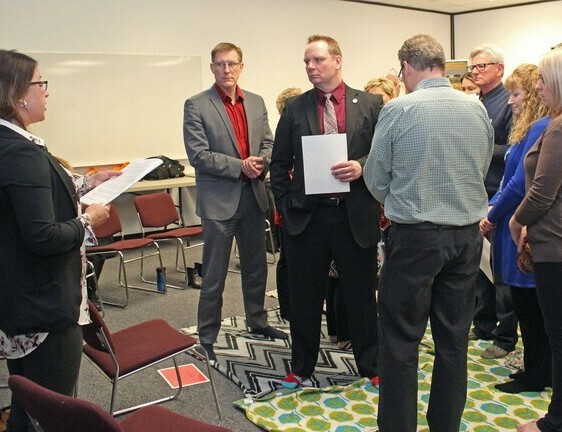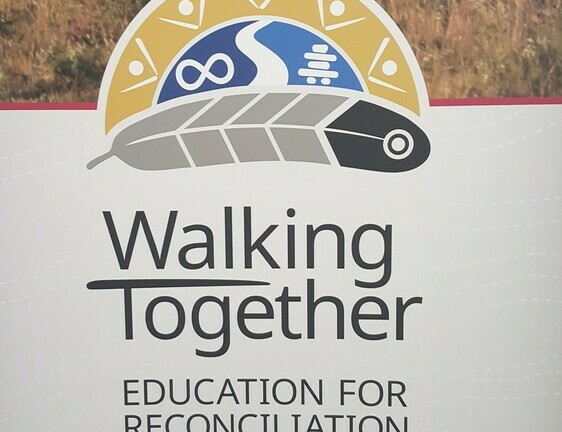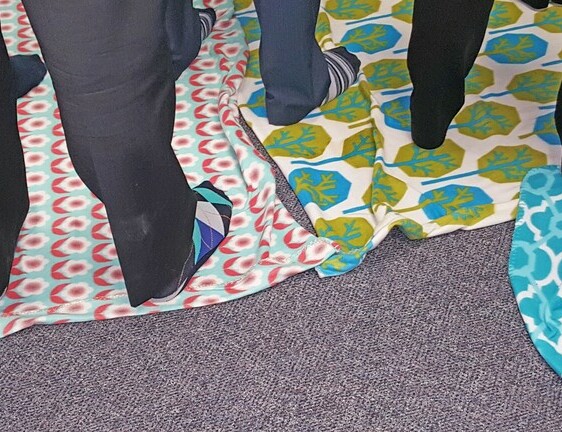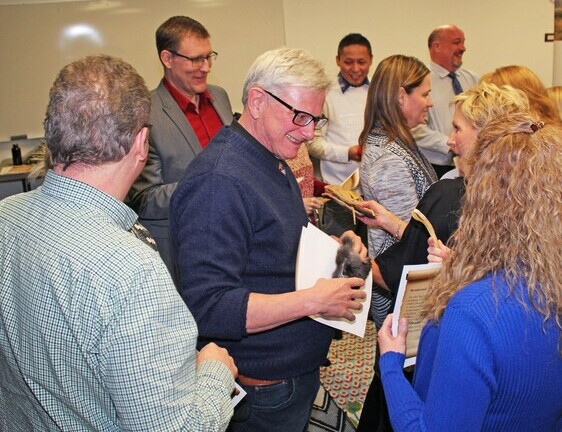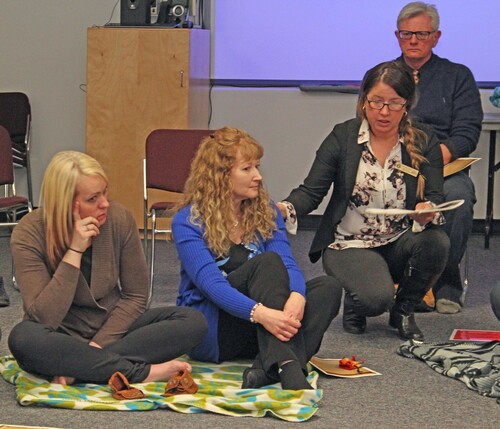
LETHBRIDGE – Hali Heavy Shield played the role of tour guide for a roomful of Palliser Regional Schools staff and trustees. Their journey did not take them to the far corners of the globe, however, but back in time for a first-hand look into the history of Indigenous people in Canada and the impact on them of European settlers, colonization and legislation.
The blanket exercise is an introduction to the type of information teachers need to know if they are to provide students with an accurate and more meaningful understanding of the past, present and future of Canada’s Indigenous people.
Heavy Shield says it’s an experiential learning tool that provides participants with the perspective of the Indigenous people.
“It’s not lecture style where they are just taking in information,” says Heavy Shield, one of six Alberta Teachers’ Association consultants with the Walking Together program. “They are able to take in 350 to 500 years of history including the 60s scoop, residential school, and policies and legislation that led to colonization of Indigenous people, all within a two-hour time frame.”
The activity begins with a video about the need for reconciliation and addresses the all too familiar question: ‘why can’t you people just get over it?’
“It puts things into perspective where we see these intergenerational traumas and we’re able to better understand,” says Heavy Shield, who represents the first generation in her family not to attend residential school. “This isn’t the way it is, just because it’s the way it is. There’s a reason for this and a whole history behind that.”
The exercise begins with blankets arranged on the floor to represent Canada before the arrival of Europeans. Participants are free to roam the area and trade with other Indigenous people.
The script traces the history of the relationship between Europeans and Indigenous peoples. Blanket corners are folded up to reduce their territory and separate one another as land is required for railroads and farming, and various legislation is enacted which reduced their freedom. At points certain participants are directed to sit out the rest of the exercise to represent those who died as a result of the introduction of smallpox-infested blankets and residential schools, or those who starved after being moved off their traditional hunting grounds.
The blanket exercise also allows for participants to gain back territory as a result of positive changes, like the formation of the Truth and Reconciliation Commission of Canada. In the end, however, the number of participants left standing are few, and their territory is a fraction of what it once was.
The lesson ends with a sharing circle, where participants have the opportunity to voice the impact the experience had on them personally. On this occasion, several mothers noted how devastated they would be if their child was taken away to residential school.
Heavy Shield points out the blanket exercise is only a gateway to history and is not intended to cover off the training required for teachers.
In her role with “Walking Together: Education for Reconciliation Professional Learning Project,” she delivers professional development and resources to teachers while making the message more relevant by tailoring it to events within Treaty 7 history.
Heavy Shield was happy to accept Palliser’s invitation to put on the blanket exercise because she knows it’s crucial that teachers see that support from administration. Elders know learning must take place from cradle to grave, and she believes Palliser is commited to life-long learning for its staff.
“This is just one way to engage people in that dialogue and get people to start talking,” says Heavy Shield, adding relationships need to be strengthened between Indigenous and non-Indigenous students and communities. “It really is going to be students who move this forward – this reconciliation forward – and it has to start with our education system.”

